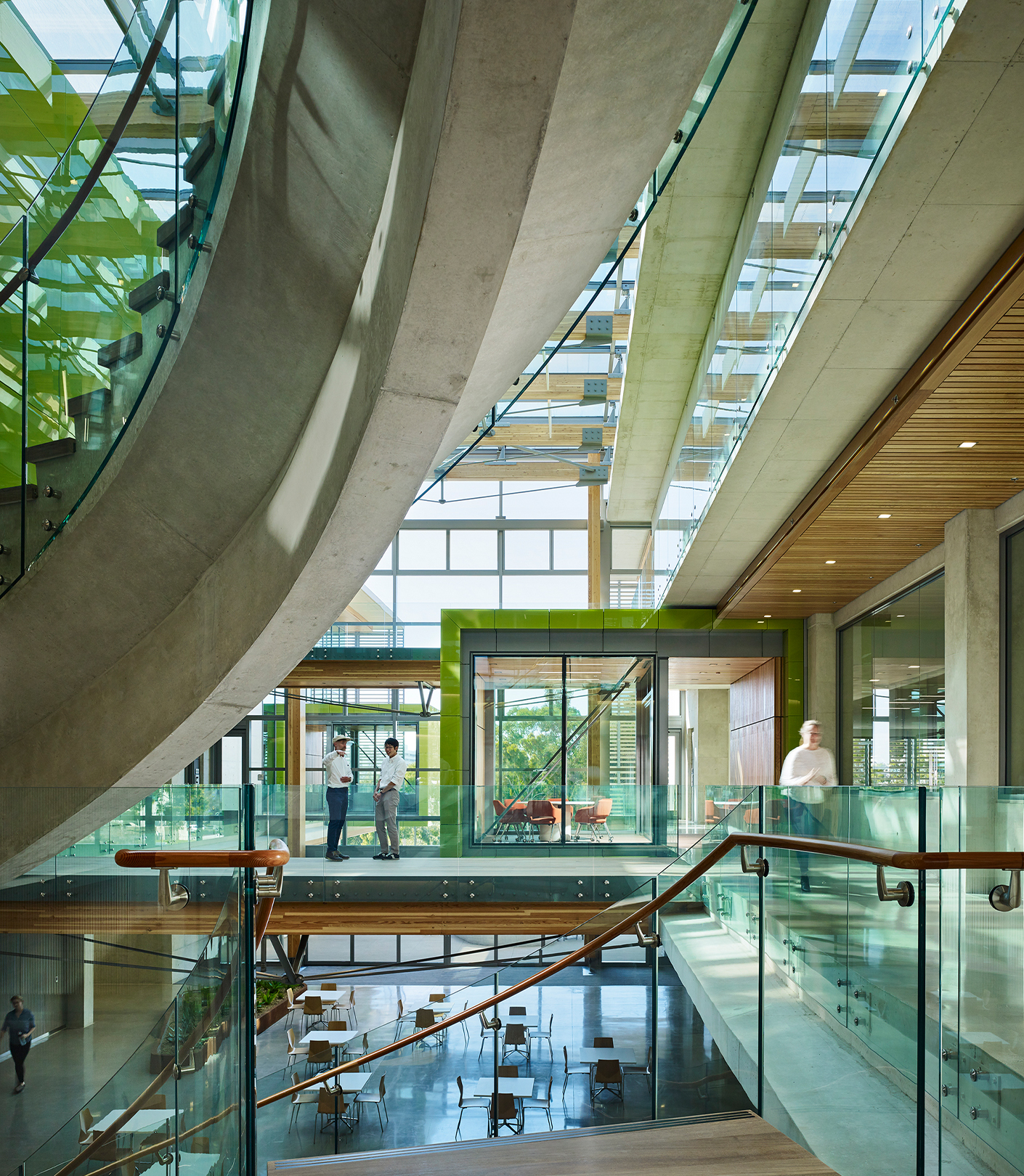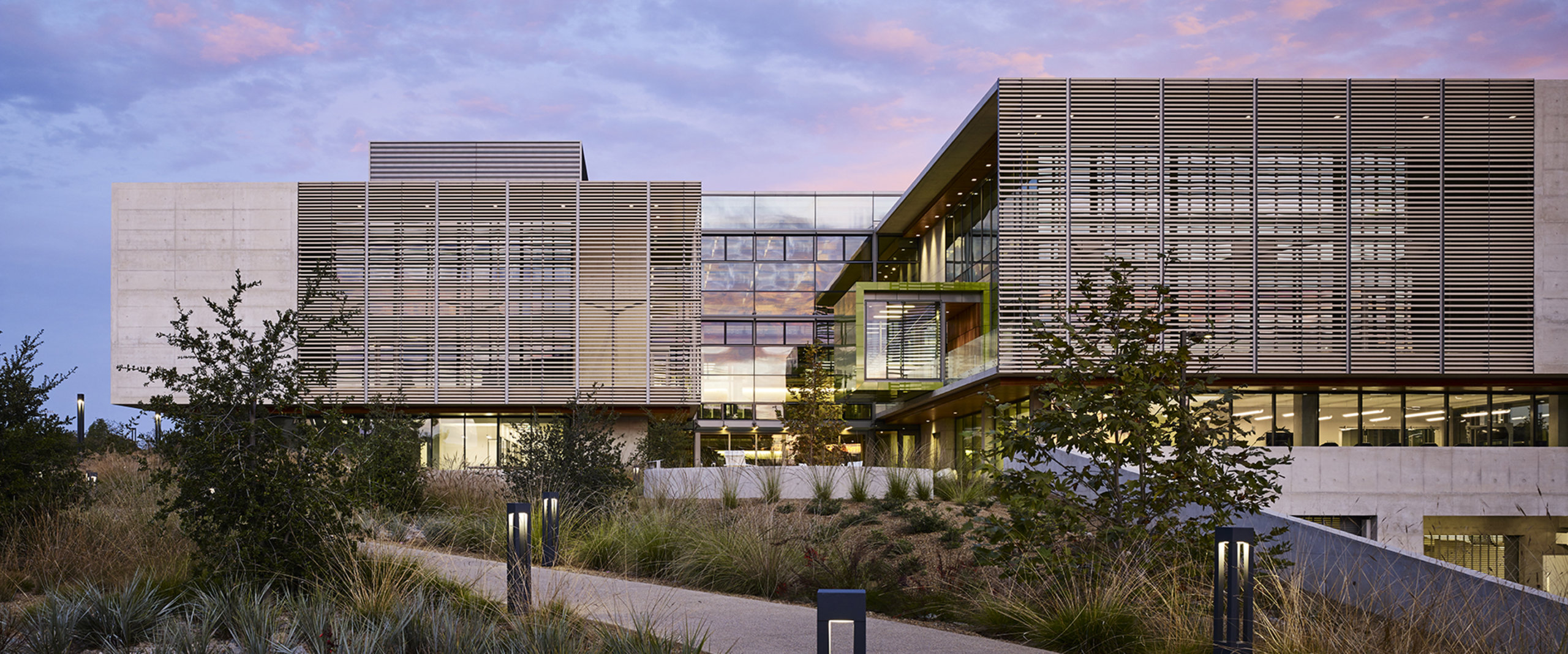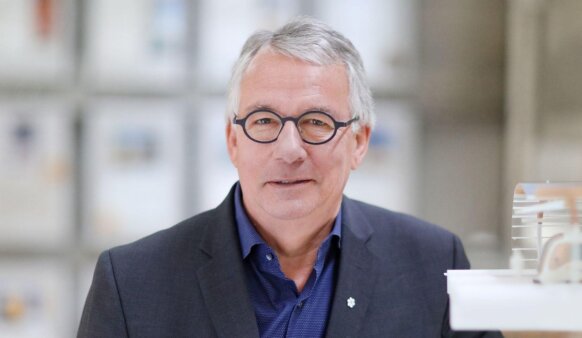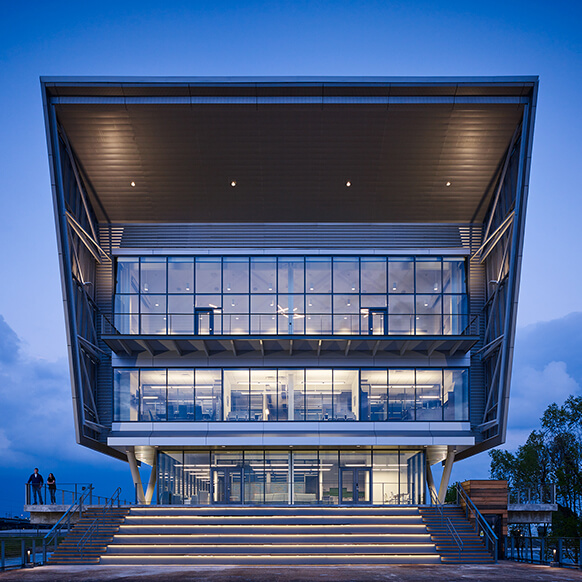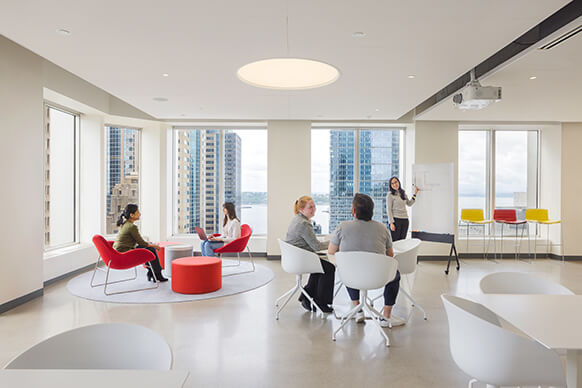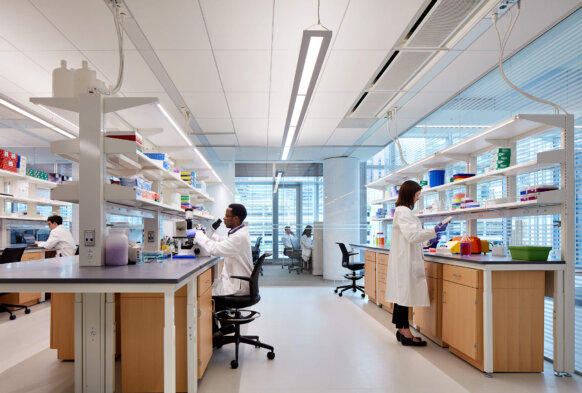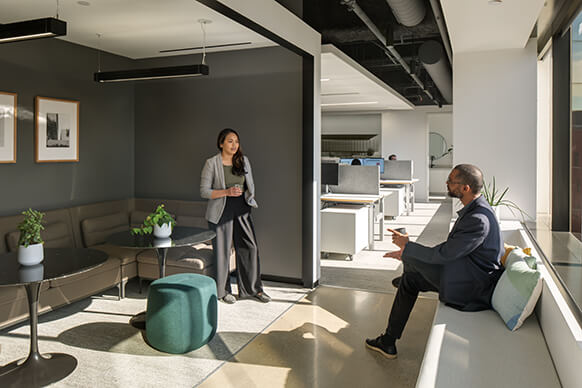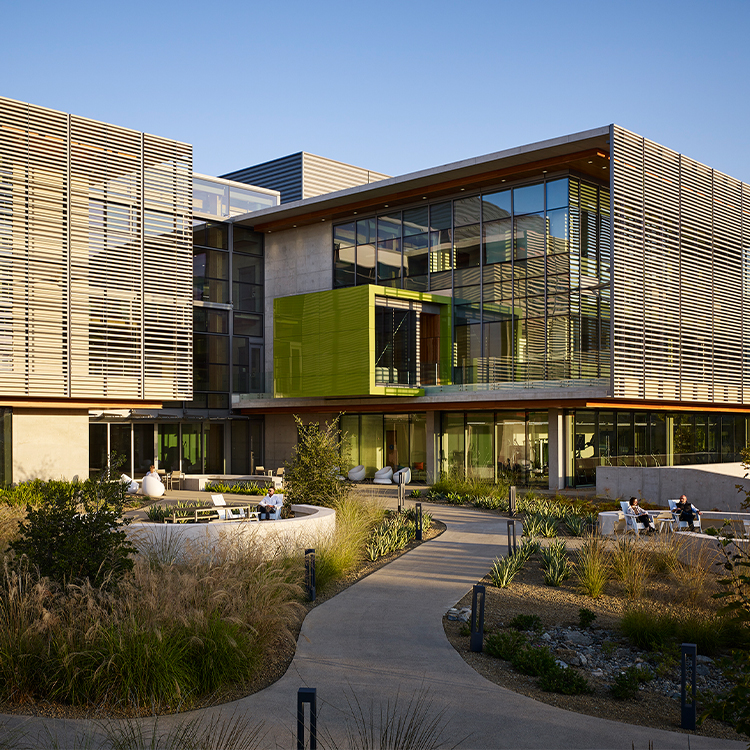
Center for Novel Therapeutics
Speeding up the delivery of life saving cancer treatments by blending academic with private sector research was the shared vision developed by two faculty members at UC San Diego. A decade later, a partnership between BioMed Realty, UCSD, and our design team led to the award-winning Center for Novel Therapeutics (CNT). Responding to the richness in the variety of companies located within the Science Research Park, the CNT was designed to encourage chance encounters through research wings wrapping around a central atrium that creates visual and physical synergies between academic and private researchers. Today, the CNT serves as a cancer research hub and the first academic-industry drug discovery incubator site in San Diego.
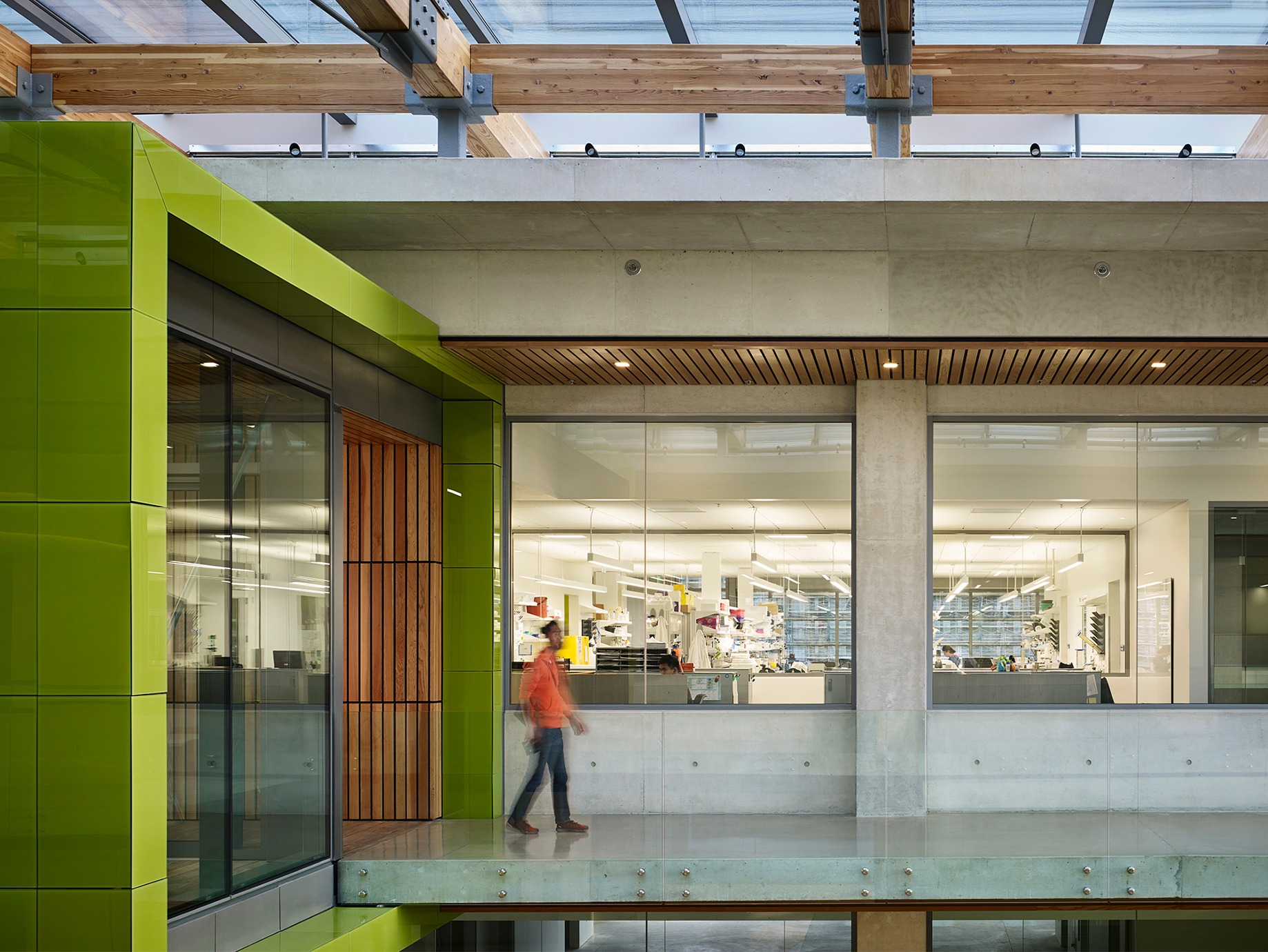
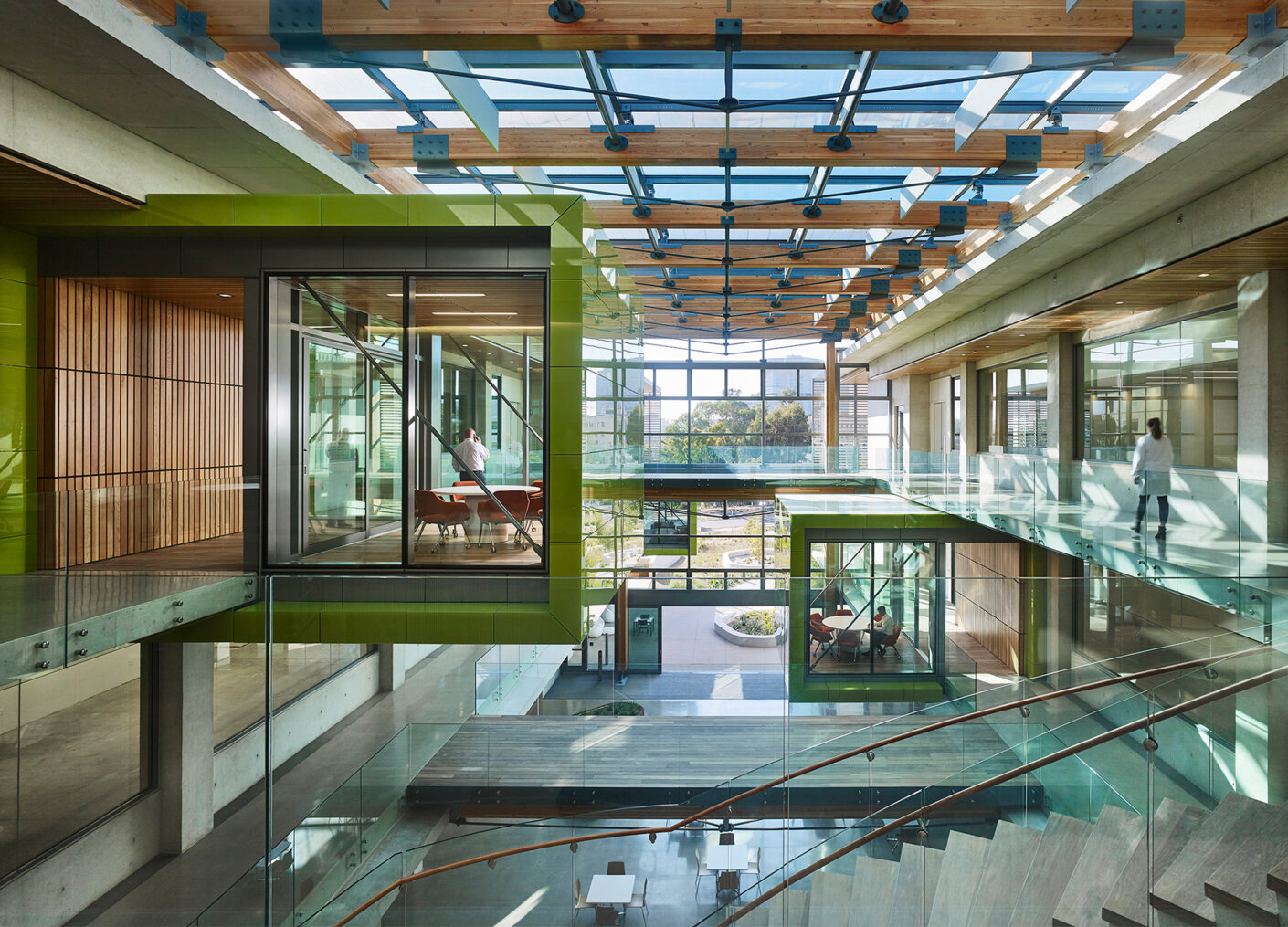
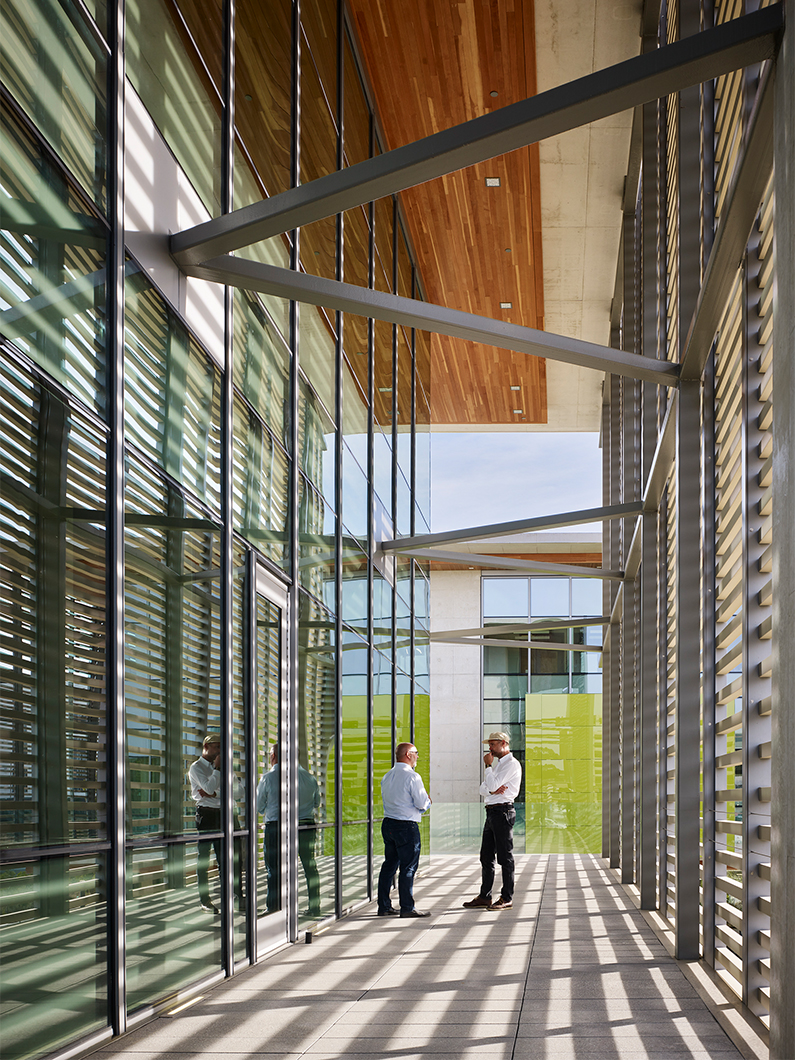
Creating an environment that enhances chance encounters was a priority when designing the Center for Novel Therapeutics. The solution was a connection to the CNT’s natural surroundings breaking down barriers between inside and out and offering a variety of amenity spaces to bring researchers and scientists to the facility. Additionally, three wings wrap around the central atrium to create synergies between start ups, the Moores Cancer Center, and the University.
-Pradeep Khosla, UC San Diego Chancellor
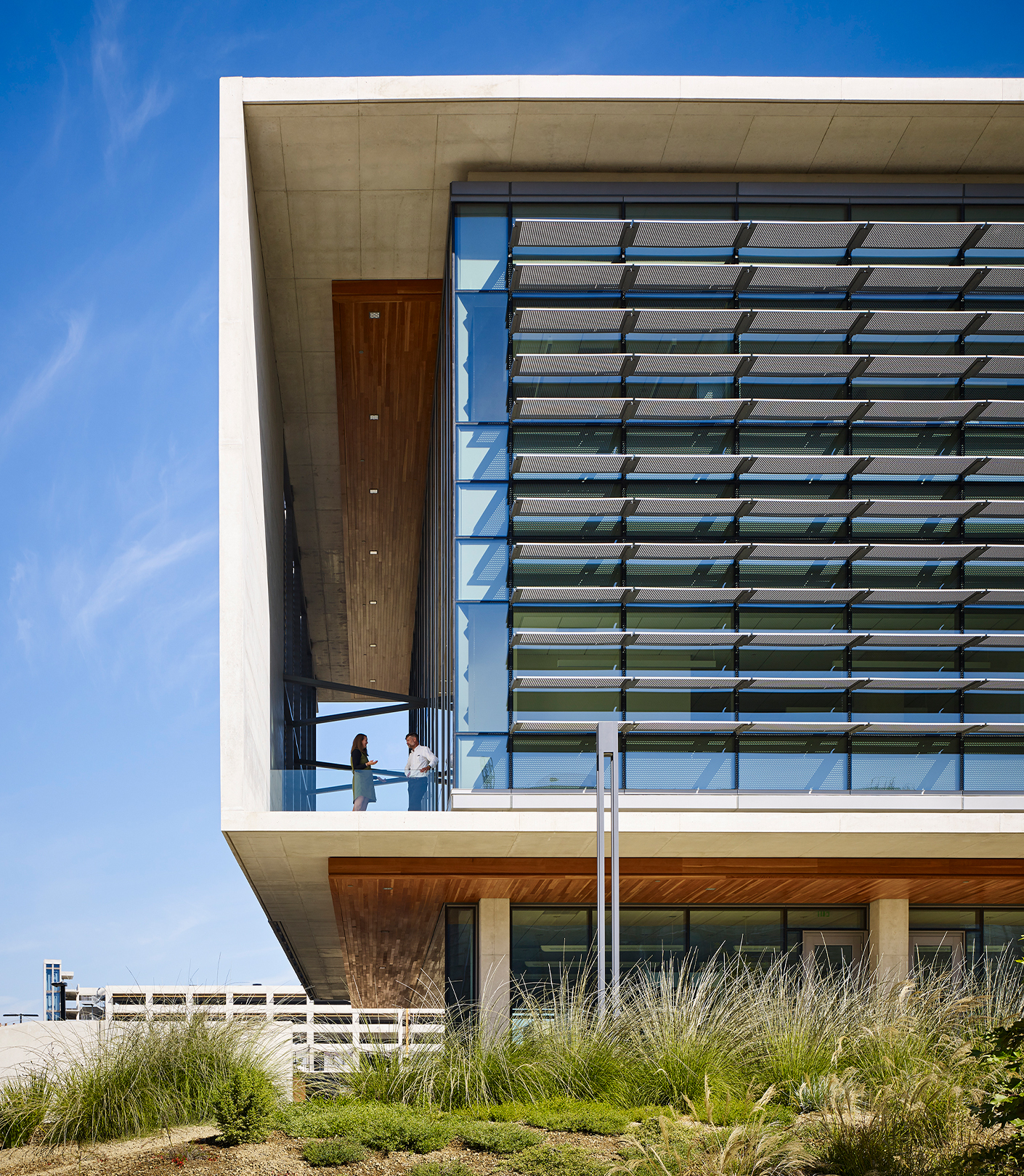
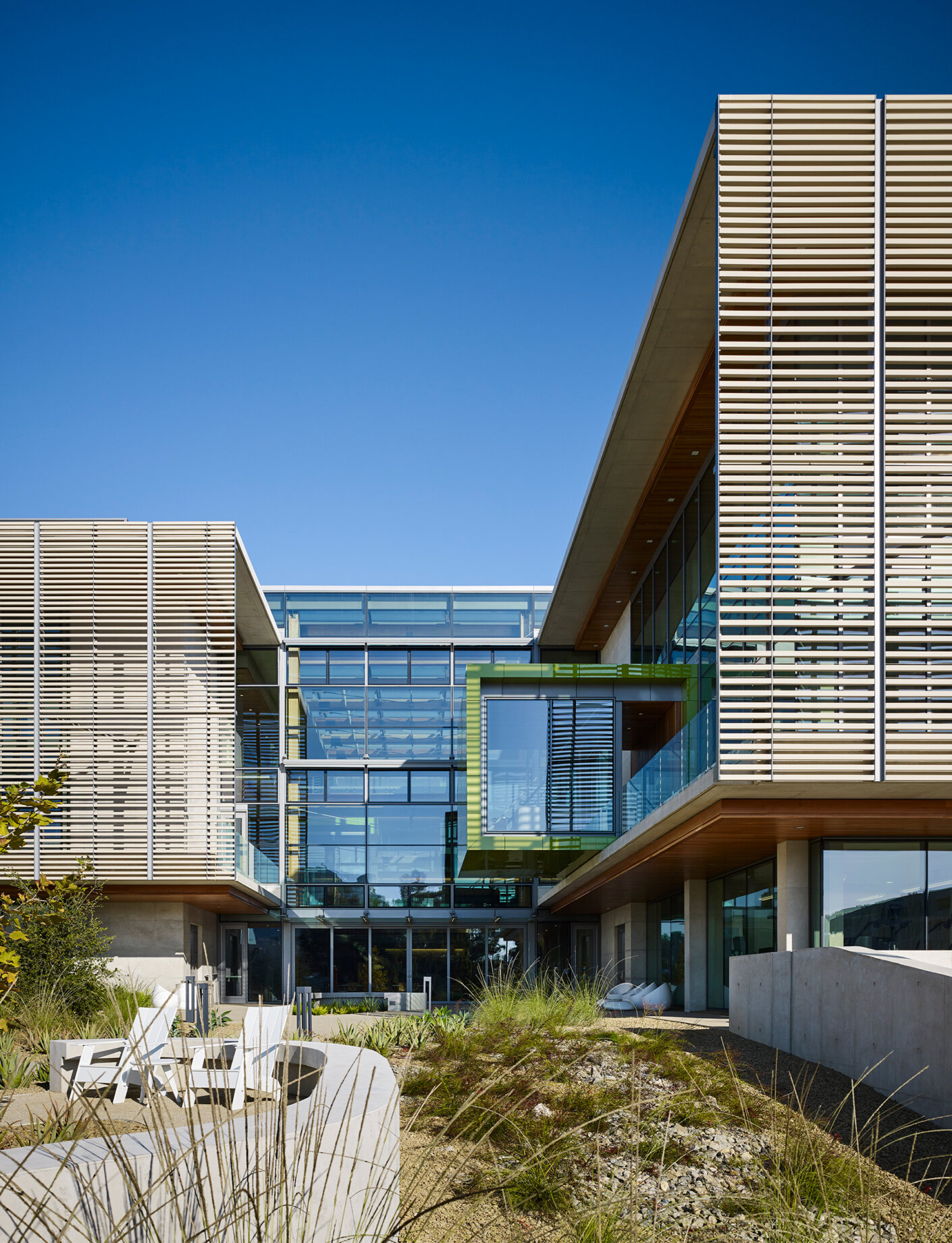
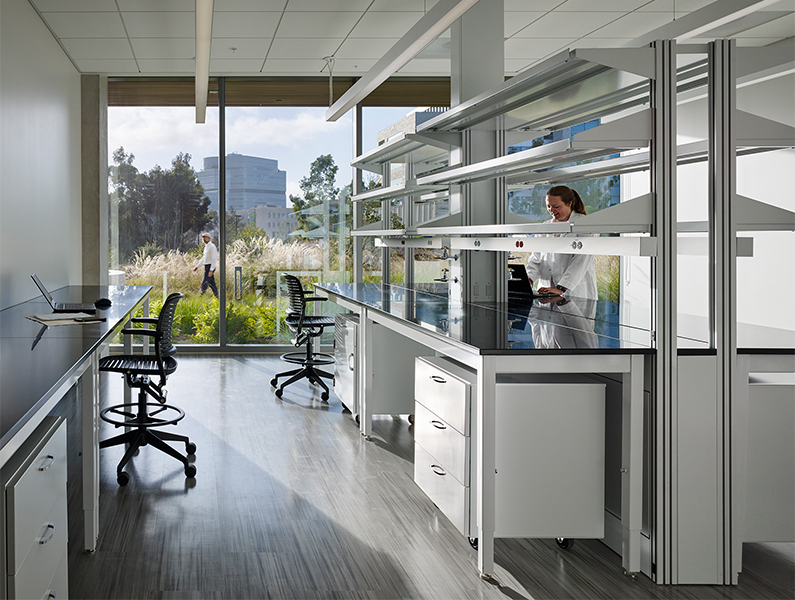
Situated in the heart of an academic research, healthcare and life science center ecosystem, the CNT project had to innovate beyond the traditional lab organization to create a new generation of research and collaboratively oriented lab spaces. The solution was to curate a series of individually scaled and flexible laboratories for Moores Cancer Center, collocated private industry labs, and scaled accelerator labs and incubator spaces. Together, these programs within the CNT project form a world class research institution where novel therapeutics are conducted and discovered.
One of the more notable features of the CNT is the atrium. The atrium serves as a gathering place where people are encouraged to experiment, collaborate and share ideas of their on-going research and discoveries. Situated in the center of the atrium is an irresistible stairway to promote active design and chance encounters. The atrium serves as the central lung for the building – filtering air and daylight into the adjacent offices/meeting areas through operable windows in the curtainwall and skylight areas.
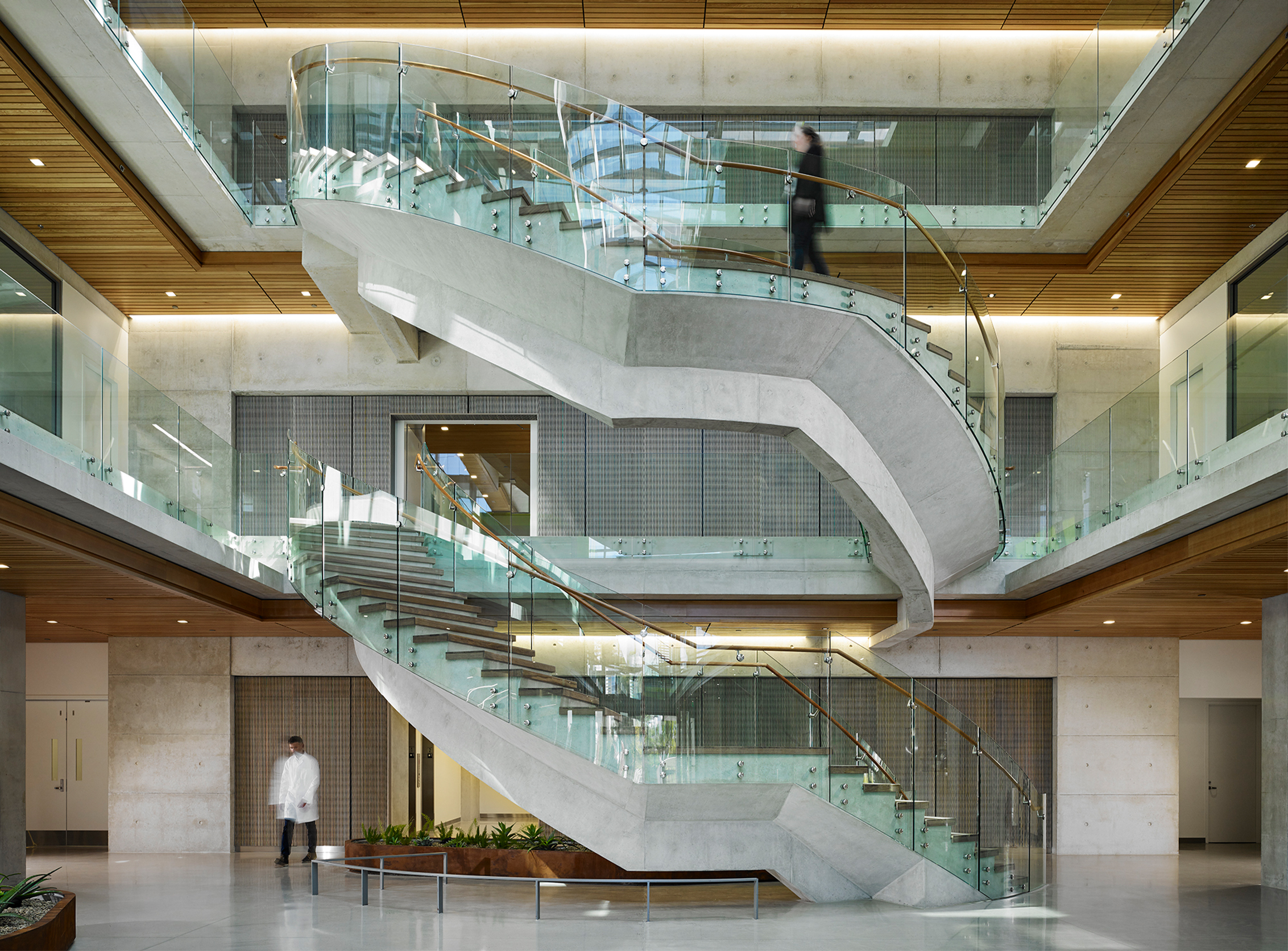
Responding to the project’s specific demands for research and collaboration, the CNT project was designed by inverting the traditional laboratory design—pushing the laboratories to the outside of the building, creating views to the campus and introducing generous amounts of daylight into the space. The lab office areas were then shifted to the interior, surrounding the atrium, promoting collaboration and reinforcing a sense of community. Within the lab zones, by rotating the lab support 90 degrees, the lab and office areas are now adjacent to one another—allowing for multiple points of access and greater visual connectivity. A secondary benefit of this arrangement is that views from the atrium into the lab spaces were created to allow the public, university and fellow researchers to see the ground breaking research being conducted within and reinforcing the project’s central concept of accelerated and shared discovery.
